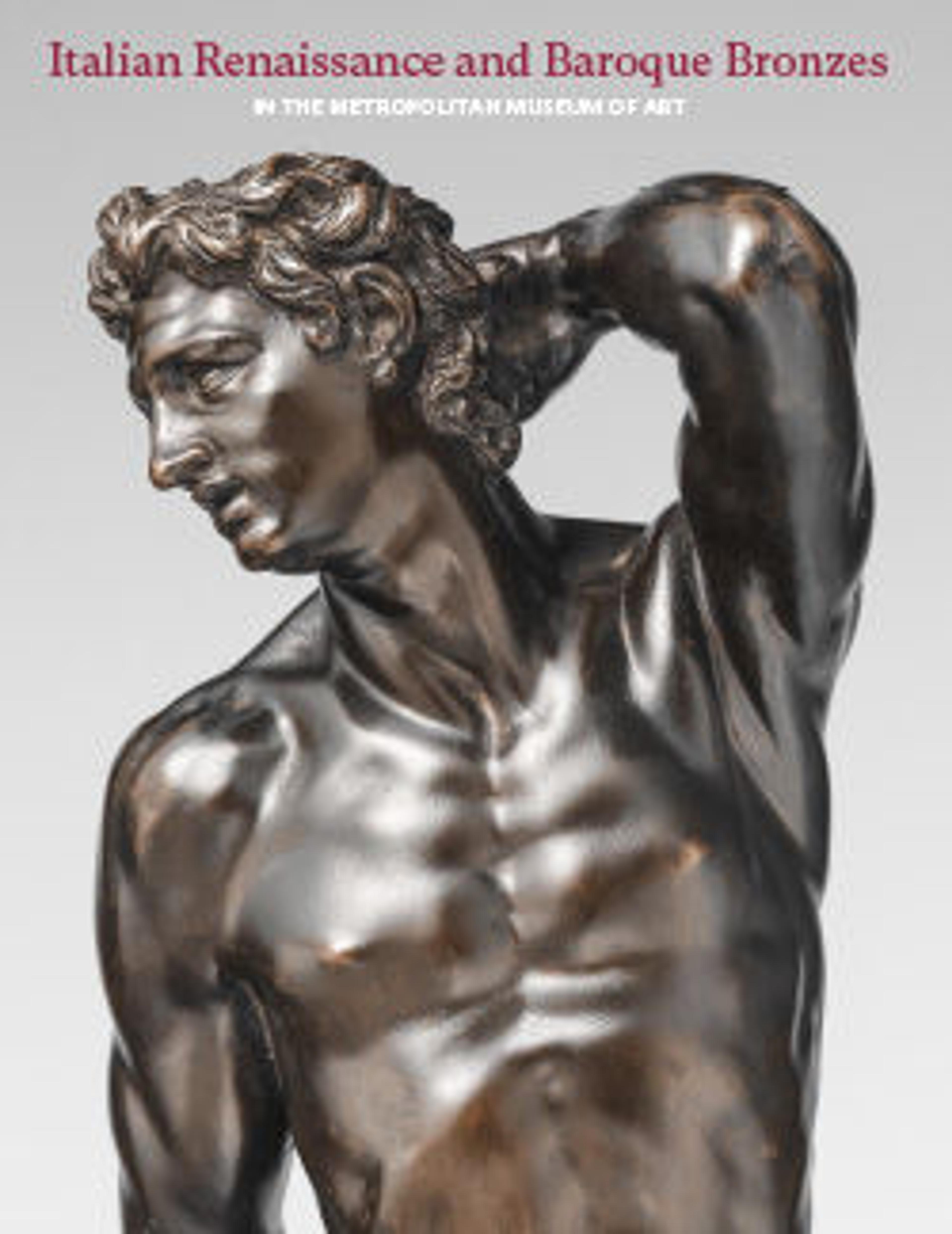Crouching Venus
Like the Mills Crouching Venus (cat. 120), this bronze is another of the many derivations from an invention by Giambologna, the earliest record of which dates to a Medici inventory of 1584 and identified by some as the autograph statuette of a kneeling woman after her bath now in the Bargello. The present Venus and the Bargello bronze are equivalent in size (ca. 26 cm), an important point as most versions of the composition are smaller. Both have a base cast integrally with the figure, a feature shared with the highest quality replicas, including those in the Huntington, Holburne, and Robert H. Smith collection (see cat. 120). The unevenly modeled base of our Venus, however, suffers by comparison with the elegant geometric abstraction of the Bargello pedestal. Moreover, the surface finish of our bronze is middling. If passages like the anatomical rendering of the legs, the reserved physiognomy of the face, the "impressionistic" rendering of the locks of hair, and the smooth definition of musculature accord with the Bargello bronze, less coherent is the dull and simplistic treatment of the drapery at the back and around the feet, which does not convey sinuous movement: the cold work is, in fact, too meticulous and exudes a frozen elegance.
These characteristics suggest a knowledge of examples based on Giambologna’s model and produced by Antonio Susini, who collaborated with the master beginning in the 1580s.1 The Holburne Venus, formerly in the French royal collection and assigned to Susini by virtue of its precious finish, is one such version.2 On the other hand, the ambiguities and misapprehensions visible in The Met cast suggest a later dating, further removed from Giambologna’s archetype.3 The likely provenance is the seventeenth century, when many casts of the popular subject still featured a proximity in details to the master’s invenzione. TM
Footnotes
(For key to shortened references see bibliography in Allen, Italian Renaissance and Baroque Bronzes in The Metropolitan Museum of Art. NY: The Metropolitan Museum of Art, 2022.)
Notes
1. Zikos 2013.
2. Paris 1999, p. 81, cat. 35.
3. The cast is very thin and even, and entirely hollow, with wax-to-wax joins at the neck, arms, thighs, and right calf. Core pins are transfixing, which is atypical of Giambologna’s studio. R. Stone/TR, 2010.
These characteristics suggest a knowledge of examples based on Giambologna’s model and produced by Antonio Susini, who collaborated with the master beginning in the 1580s.1 The Holburne Venus, formerly in the French royal collection and assigned to Susini by virtue of its precious finish, is one such version.2 On the other hand, the ambiguities and misapprehensions visible in The Met cast suggest a later dating, further removed from Giambologna’s archetype.3 The likely provenance is the seventeenth century, when many casts of the popular subject still featured a proximity in details to the master’s invenzione. TM
Footnotes
(For key to shortened references see bibliography in Allen, Italian Renaissance and Baroque Bronzes in The Metropolitan Museum of Art. NY: The Metropolitan Museum of Art, 2022.)
Notes
1. Zikos 2013.
2. Paris 1999, p. 81, cat. 35.
3. The cast is very thin and even, and entirely hollow, with wax-to-wax joins at the neck, arms, thighs, and right calf. Core pins are transfixing, which is atypical of Giambologna’s studio. R. Stone/TR, 2010.
Artwork Details
- Title:Crouching Venus
- Artist:After a model by Giambologna (Netherlandish, Douai 1529–1608 Florence)
- Date:17th century
- Culture:Italian, Florence
- Medium:Bronze
- Dimensions:Height: 10 1/4 in. (26 cm)
- Classification:Sculpture-Bronze
- Credit Line:Gift of Irwin Untermyer, 1968
- Object Number:68.141.25
- Curatorial Department: European Sculpture and Decorative Arts
More Artwork
Research Resources
The Met provides unparalleled resources for research and welcomes an international community of students and scholars. The Met's Open Access API is where creators and researchers can connect to the The Met collection. Open Access data and public domain images are available for unrestricted commercial and noncommercial use without permission or fee.
To request images under copyright and other restrictions, please use this Image Request form.
Feedback
We continue to research and examine historical and cultural context for objects in The Met collection. If you have comments or questions about this object record, please contact us using the form below. The Museum looks forward to receiving your comments.
